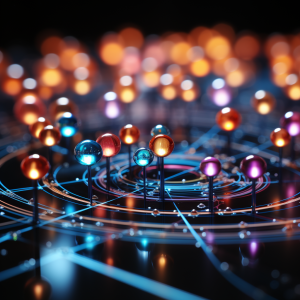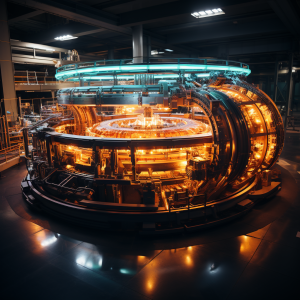
What is the difference between a cyclotron and a synchrotron?
Cyclotrons and synchrotrons are both types of particle accelerators, used in physics to accelerate charged particles to high speeds. These devices have a wide range of applications, from basic research in particle physics, to medical applications such as cancer treatment and radiography. Understanding the differences between these two types of accelerators requires diving into their working principles, structures, applications, and limitations.
Cyclotrons
Cyclotrons were one of the earliest types of particle accelerators. Invented in the 1930s by Ernest O. Lawrence, they use a constant magnetic field and a varying electric field to accelerate particles. The basic components of a cyclotron include two hollow “D”-shaped electrodes, or “dees”, positioned back to back, creating a circular area in the center. The dees are placed in a constant magnetic field, perpendicular to the plane of the dees. An alternating electric field is applied across the dees.
When a charged particle, such as a proton, is introduced into the cyclotron, the magnetic field forces it to travel in a circular path within one of the dees. The alternating electric field accelerates the particle each time it crosses the gap between the dees, which increases the radius of the particle’s circular path. The frequency of the electric field is kept constant, and is synchronized with the time it takes the particle to complete a half-circle within a dee. This ensures that the particle receives a push from the electric field each time it crosses the gap between the dees, regardless of the increasing radius of its path.
This design allows a cyclotron to accelerate particles to high speeds within a relatively compact device. The particle’s spiral path also means that it can remain in the accelerator for a longer time, allowing it to gain more speed. Once the particles reach the desired speed, they are extracted from the cyclotron and directed toward a target.
Synchrotrons
Synchrotrons are a more modern type of particle accelerator, and they are designed to overcome some of the limitations of cyclotrons. In a synchrotron, both the electric and magnetic fields are varied over time. The particles move in a large circular path, rather than a spiral path, and the diameter of the path remains constant.
The components of a synchrotron include a circular vacuum chamber, a series of magnets to bend and focus the particle beam, and a series of radio frequency (RF) cavities to accelerate the particles. The particles are injected into the vacuum chamber and guided by the magnetic field to travel in a circular path. The RF cavities provide an electric field that accelerates the particles each time they pass through.
Unlike in a cyclotron, the magnetic field in a synchrotron is not constant. As the speed of the particles increases, the strength of the magnetic field is increased to keep the particles moving in the same circular path. This is necessary due to the relativistic effects that occur at high speeds. As particles approach the speed of light, their mass effectively increases, which would normally cause the radius of their path to increase. By increasing the magnetic field strength, a synchrotron can counteract this effect and keep the particles on track.
This design allows a synchrotron to accelerate particles to much higher speeds than a cyclotron, up to nearly the speed of light. This makes synchrotrons ideal for high-energy physics research. However, synchrotrons are also larger and more complex than cyclotrons, requiring sophisticated control systems to adjust the electric and magnetic fields in synchronization with the particle beam.
Comparing Cyclotrons and Synchrotrons
Both cyclotrons and synchrotrons have their advantages and disadvantages. Cyclotrons are simpler, smaller, and cheaper to build, making them ideal for applications where high-energy particles are not required. They are commonly used in medical and industrial applications, such as cancer treatment and materials testing.
Synchrotrons, on the other hand, are capable of accelerating particles to much higher energies, making them invaluable for particle physics research. They are also used in applications where high-energy, high-brightness beams are required, such as X-ray crystallography and synchrotron radiation research.
However, the complexity and cost of synchrotrons can be a drawback. The need to vary both the electric and magnetic fields in synchronization with the particle beam requires sophisticated control systems. The large size of synchrotrons also requires more space and infrastructure to support.
In conclusion, while both cyclotrons and synchrotrons serve the purpose of accelerating particles to high speeds, their design principles, structures, and applications are significantly different. The choice between a cyclotron and a synchrotron depends on the specific needs of the application, whether it be for medical treatment, industrial testing, or cutting-edge research in particle physics.




